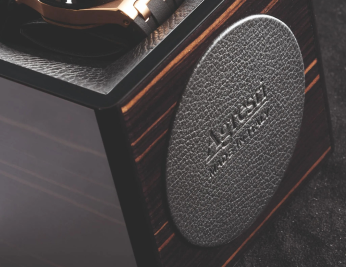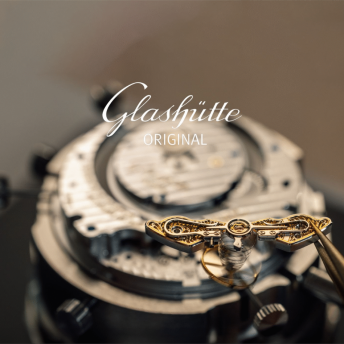Haute horology is a delicate art of craftsmanship and uniqueness that perfectly embodies two concepts: luxury and elegance. Thinking about a high-end watch, we cannot help but notice the objective quality and care in aesthetics, and there is one brand that perhaps embodies these two paradigms more than any other. I am talking about Cartier, which, with its more than 150-year history, has made elegance and style its trademark, putting itself forward as one of the most luxurious watch brands on the scene.
Today we will explore Cartier’s most uniquely designed watches, models that reflect beauty and classic elegance. We will set aside the history of the maison and its most iconic products, such as the famous Santos, to focus instead on those unique pieces that embody the values and traditions handed down by the Parisian brand over the decades. Let’s discover them together.
Cartier Tank Asymétrique
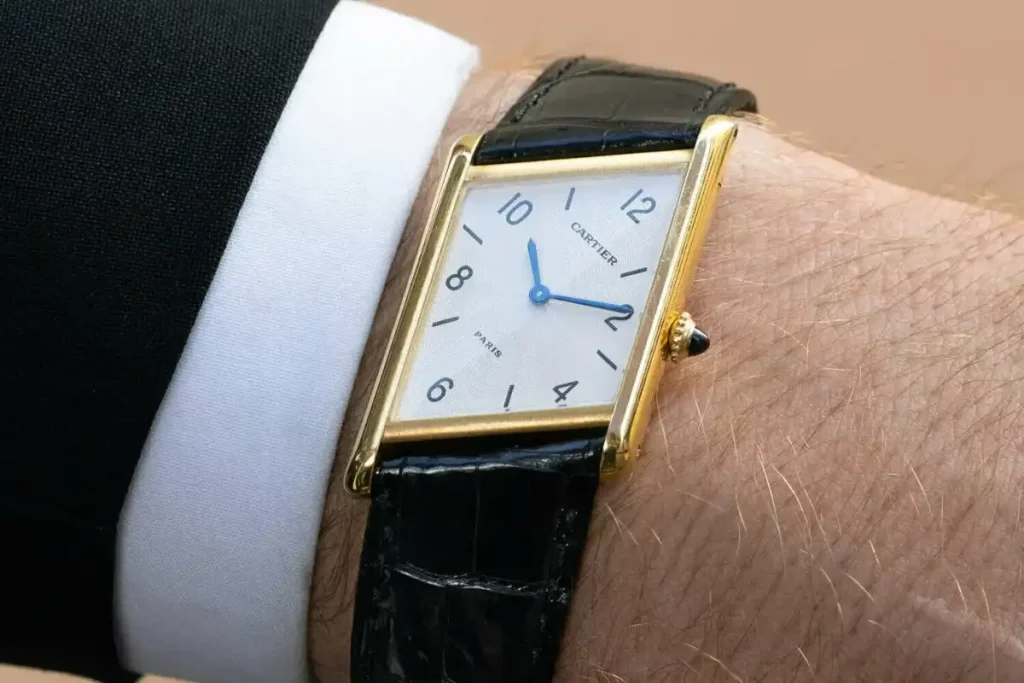
The first decades of the last century marked a period of great prosperity for Cartier, which saw the birth of its first men’s wristwatch, the famous Santos. A symbol of elegance and innovation, the style and character of Cartier’s watches has continued to the present day, spanning more than a century of history without losing its appeal.
In those years, social and economic development was profoundly transforming daily life. The horse, for centuries the main means of transportation, was giving way to the automobile, marking a new era. With this change came the need to consult the time in a more practical and immediate way, without the encumbrance of pocket watches.
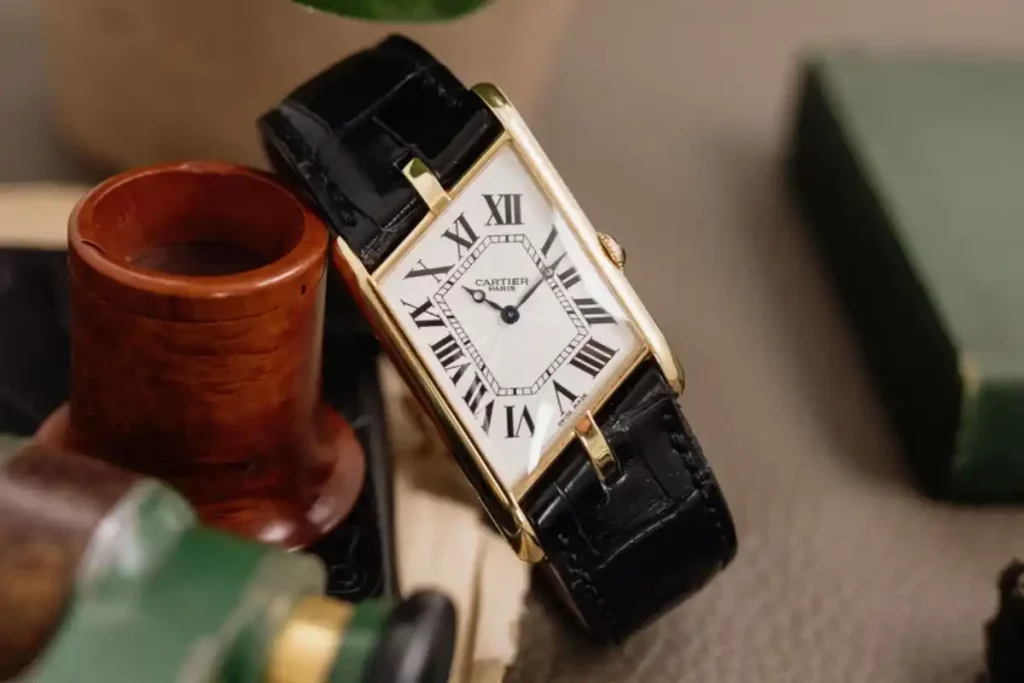
It was in this context that Cartier created the Tank Asymétrique, initially called the Parallelogram. Its distinctive rhombus-shaped case was designed to allow the wearer to read the time without having to take their hands off the steering wheel. This innovative design made the watch perfectly aligned with the driver’s view, combining functionality and style in a totally unique way.
This model was appreciated so much by critics that 70 years later it was reintroduced within the Collection Privée Cartier Paris collection, revising it in some respects so that it conformed to today’s technologies.
Cartier Tank Basculante
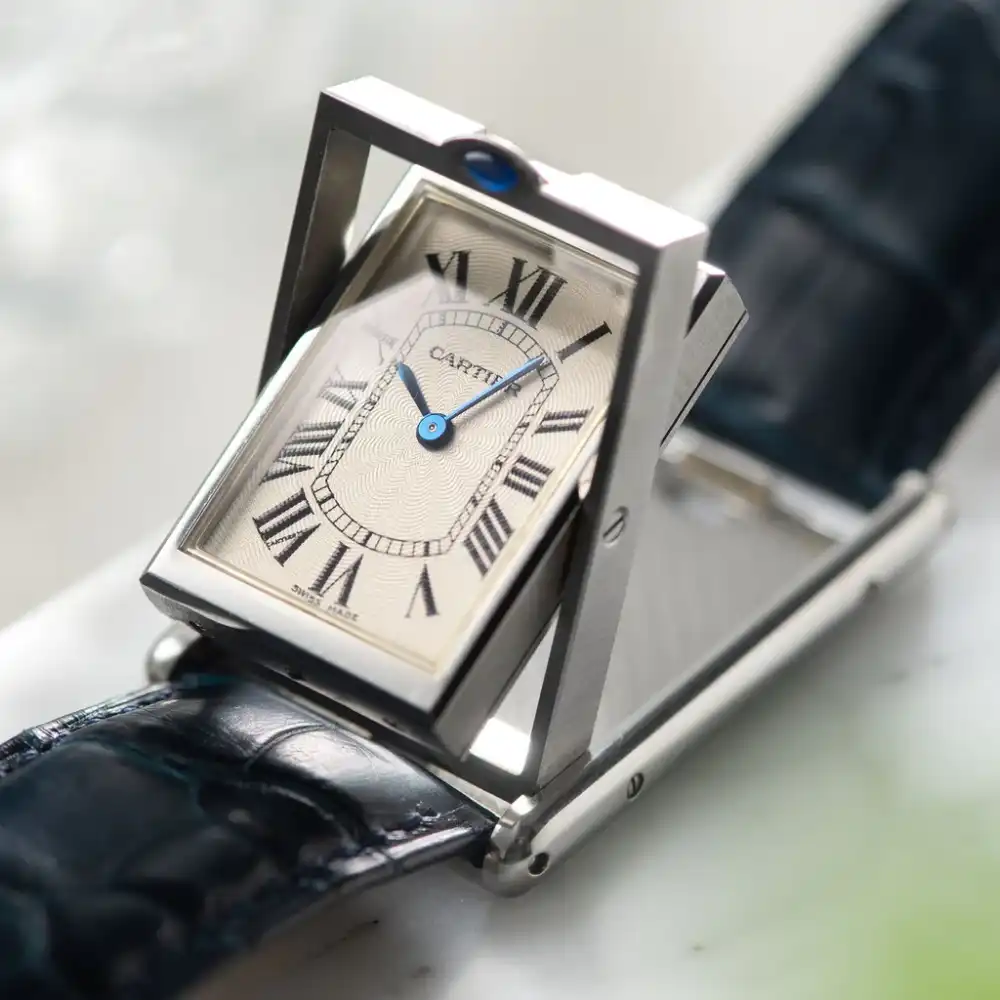
As mentioned earlier, the 1920s and 1930s represented a true Golden Ages for Cartier, a period in which the maison consolidated its status as a symbol of elegance and innovation. In those years, the design of the famous Tank became the basis for the creation of unique and inimitable models, capable of redefining the concept of the wristwatch without ever abandoning the classic and elegant style that characterizes the Parisian brand.
In 1932, one such masterpiece was born: the Cartier Tank Basculante, a truly unique watch. Its uniqueness lay in the innovative mechanism that allowed the case to rotate 180 degrees, protecting the dial from shocks. This mechanism was inspired by the famous Jaeger-LeCoultre Reverso, but Cartier reinterpreted it by adding a distinctive and refined touch: the possibility of placing the case vertically, transforming the watch into a small table timepiece.

With its essential and timeless design, the Tank Basculante has never lost its appeal. Repurposed in the Collection Privée Cartier Paris collection, this model has been updated with the introduction of a sophisticated mechanical movement, ensuring precision and quality.
Cartier Cheich
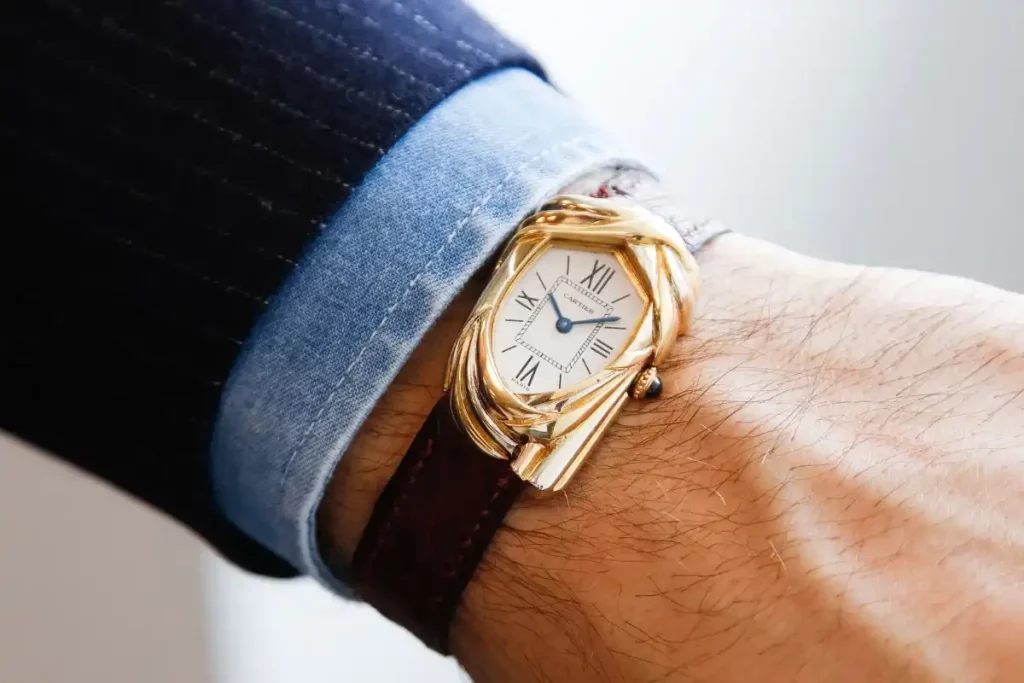
The watch we are going to talk about now is truly breathtaking. I am talking about the magnificent Cartier Cheich, an unusual and extraordinary specimen that immediately catches the eye. Made in 1985 to celebrate Gaston Rahier, winner of the Paris-Dakar rally competition, it was born out of a collaboration between Cartier and Thierry Sabine, founder of the famous race. It is not uncommon for watches to be donated to winners of motorsport competitions: think of Rolex with the 24 Hours of Daytona or Tag Heuer with the Indy 500. However, Cartier chose to go beyond the simple gesture, creating a one-of-a-kind model that was impactful and immediately descriptive.
The watch case draws inspiration from the typical blue cotton veil, the Cheich, worn by the Tuareg tribe, a symbol of tradition and cultural identity in the desert. This innovative choice is not only a tribute to the Paris-Dakar, but an exaltation of one of the most characteristic elements of the competition, transforming the watch into a one-of-a-kind, unrepeatable piece. Considered a true jewel, the Cheich stands out for the extraordinary combination of its materials: white gold, yellow gold and rose gold. This richness of detail and refined craftsmanship make it an object of desire for collectors around the world.
Cartier Cloche
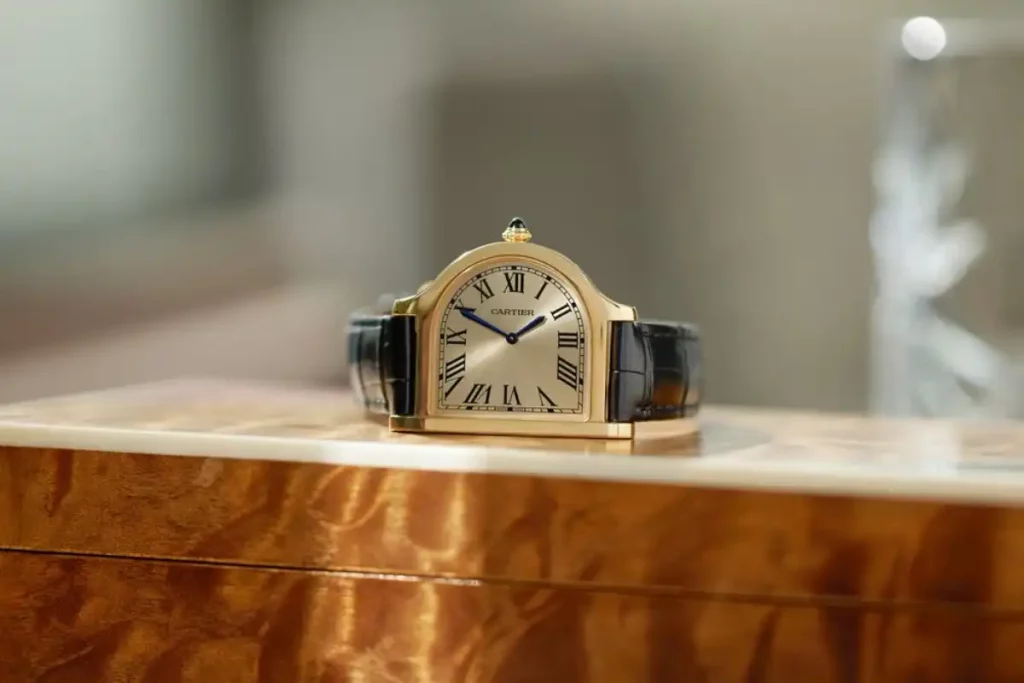
Another example of a functional watch, though not limited to use on the wrist, is the exquisite Cartier Cloche. Created in the 1920s, it is distinguished by its unique design, which abandons the traditional round shape of the case to offer a miniature reinterpretation of pendulettes, the small table clocks. Cartier’s intuition was to create a timepiece with dual functionality: a watch that could be worn on the wrist with elegance, but also rested on a surface and used as a table clock. This particular use is reflected in the positioning of the 12 o’clock, which coincides with the winding crown, making it practical in both configurations.
The first models of the Cloche, made in the 1920s, were produced in platinum and gold, with some examples decorated with diamonds, emphasizing the precious and distinctive character of this timepiece. The bold style and over-the-top elegance of the Cloche take us back to a time when Cartier was establishing itself as a maker of watches of the highest caliber, while maintaining its roots as a jeweler. This watch perfectly represents the creative flair and innovation that characterized the maison, which was able to combine art and functionality, with unparalleled mastery.
Cartier Bagnoire
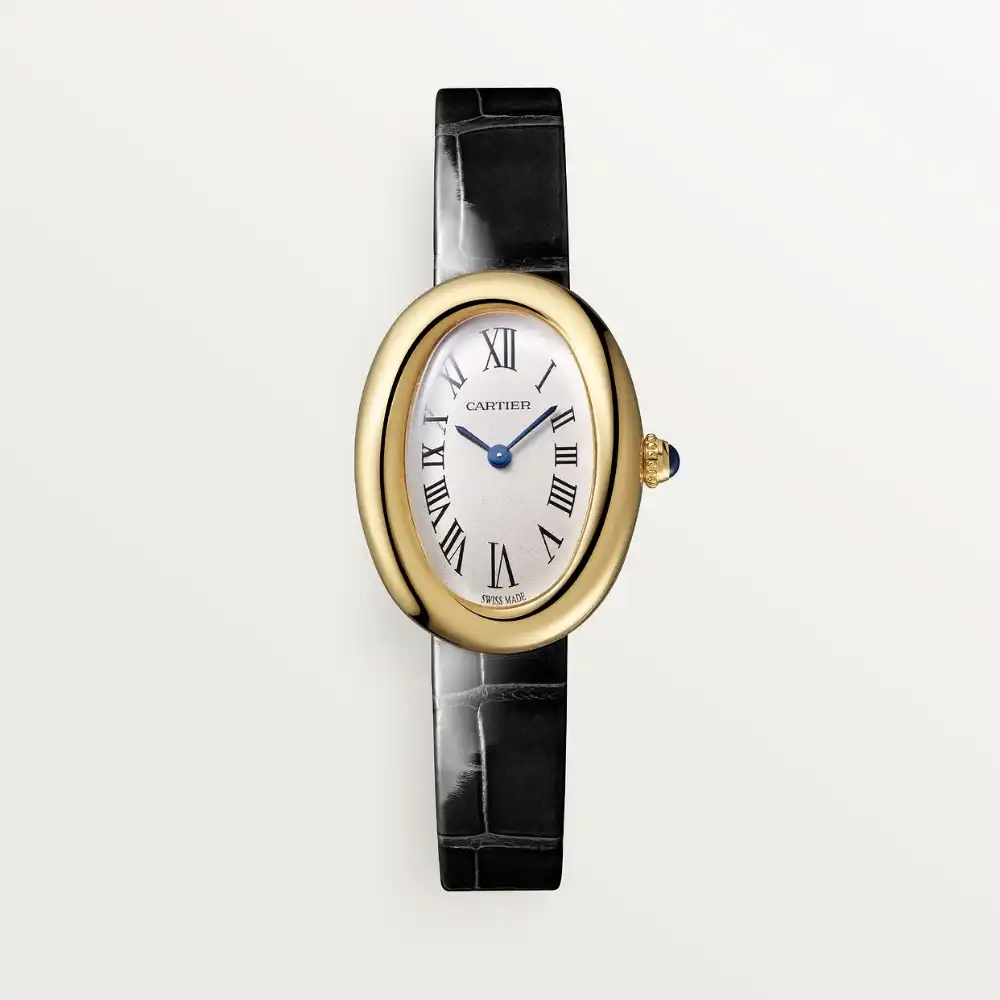
Let us now turn to an iconic timepiece made for the female audience: the Cartier Baignoire. This watch, conceived by Louis Cartier in the early 1900s, was born out of the founder’s desire to reinvent the women’s wristwatch, combining elegance, simplicity and a hint of eccentricity.
The characteristic oval shape of the Baignoire is not the result of chance, but draws inspiration from the bathtubs of the time, from which it also derives its name (“baignoire” is French for “bathtub”). This simple yet refined design is distinguished by its essentiality made even more refined by the soft lines that give the watch a timeless elegance.

Over the years, the Baignoire has been reinterpreted in numerous variations, both in materials and design. Prominent among these is the Baignoire Allongée, a version featuring a larger and slimmer case that further accentuates the oval shape. This variant has become particularly beloved by high society women and celebrities, thanks to its aristocratic appeal and unique design, capable of perfectly embodying the refinement typical of the Cartier maison.
Cartier Pebble
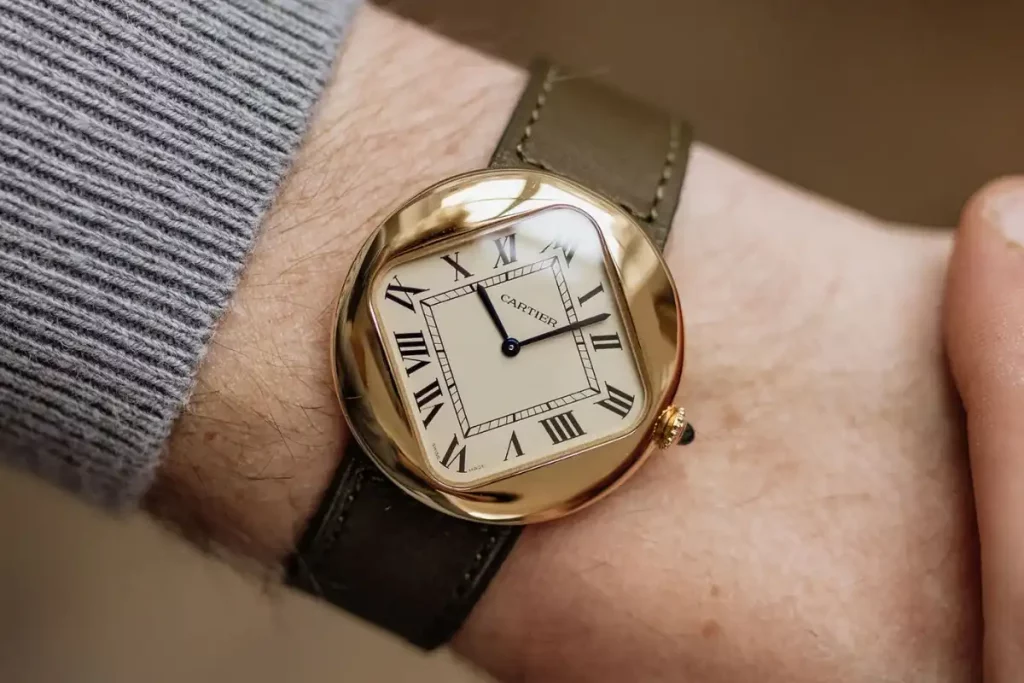
To talk aboutthis watch, we have to take a thirty-year leap from previous watches, landing in 1960s London, an era known as the Swinging Sixties. In those years, the English capital was experiencing a cultural and social renaissance: the streets were animated by youth movements that, driven by a strong desire for lightheartedness and rebellion, celebrated a new spirit of modernity and freedom. It was in this vibrant climate that, in 1972, the Cartier Pebble was born, the brainchild of the London branch of the maison.
The Pebble’s design draws inspiration from natural forms, particularly pebbles smoothed by water (hence the name itself, “pebble,” which means “pebble” in English). Its round case, with its soft and perfectly harmonious curves, seems sculpted by nature itself. This balance between simplicity and originality has made the Pebble a unique watch and one of Cartier’s most sought-after and appreciated models. The polished case, rounded corners, and diamond-set dial create a distinctive design that, while breaking with tradition, retains all the charm and elegance typical of the house.

Rarity has helped increase the prestige of this model: it is estimated that only six original examples were produced, making it an almost unattainable piece for collectors. In 2022, Cartier paid tribute to the Pebble with a reissue faithful to the original, featuring a yellow gold case and a squared dial. This limited edition was produced in only 150 pieces.
Cartier Crash
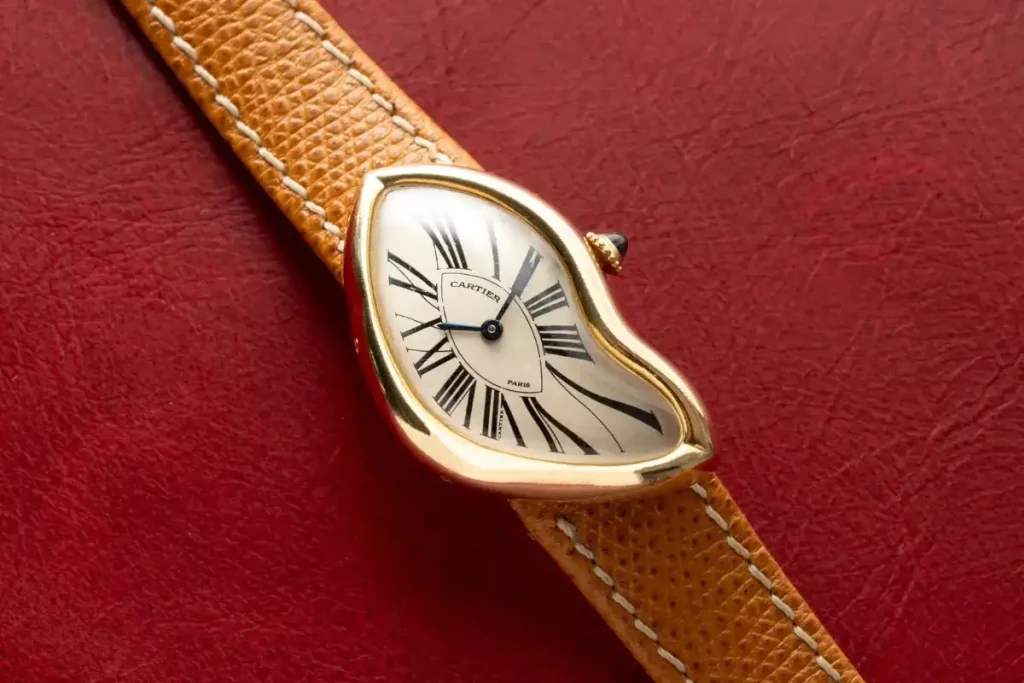
We now come to a watch that needs no lengthy introduction: the Cartier Crash, one of the most iconic and daring watches ever made. With its unconventional and striking shape, the Crash has earned a prominent place among the world’s most beloved timepieces. Made in the 1960s by Cartier London, this unique watch draws its inspiration from the work of the famous surrealist painter Salvador Dalí and his famous “soft watches” depicted in the painting “The Persistence of Memory.”
With the Crash, Cartier reached a true pinnacle of creativity and innovation. Each piece was made and finished entirely by hand, a feat made particularly complex by the irregularity of the case. Every detail, from the movement components to the distorted numerals on the dial, required extraordinary craftsmanship, turning each piece into a true work of art.
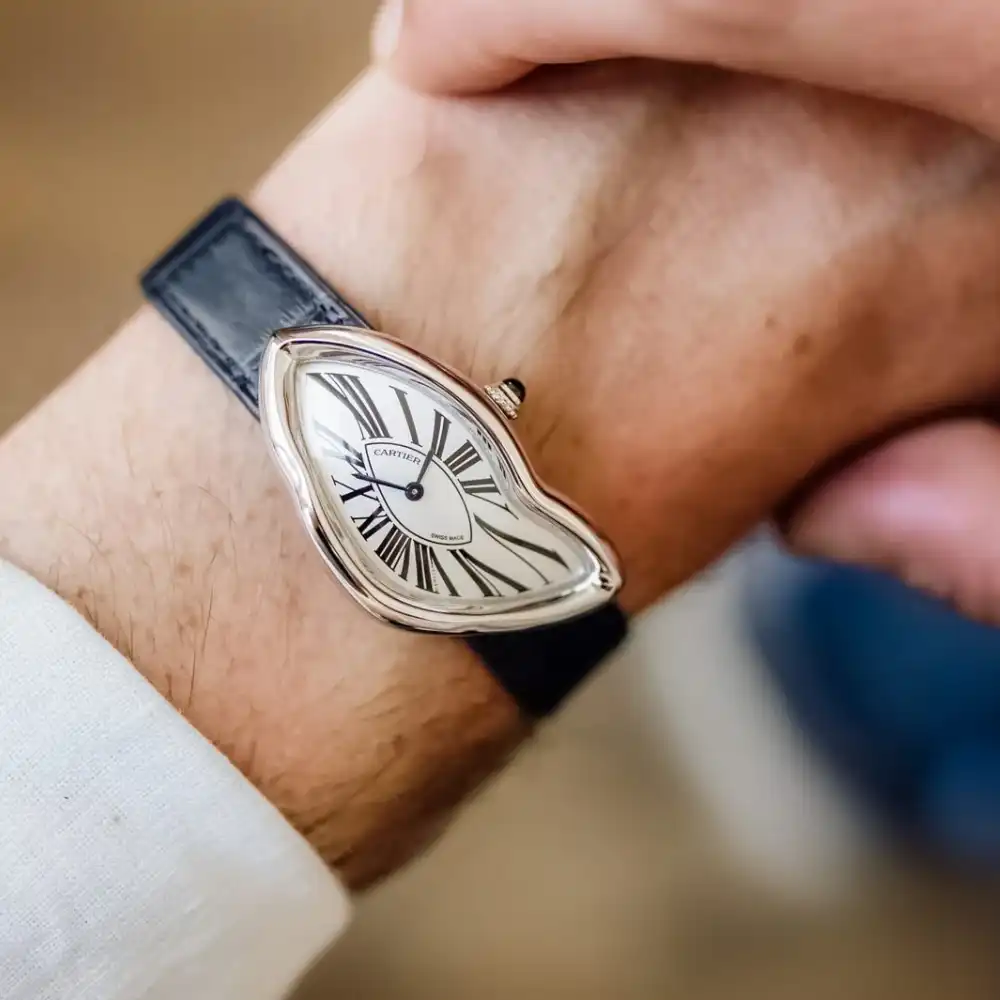
The Cartier Crash returned to production at distinctive moments: in the 1990s, in 2019, and in 2023, with editions faithfully paying homage to the original design. Although the shape remained virtually unchanged, Cartier introduced variations in precious metals and decorations, further enriching the range of one of the house’s most iconic models.
Cartier Tank A Guichet
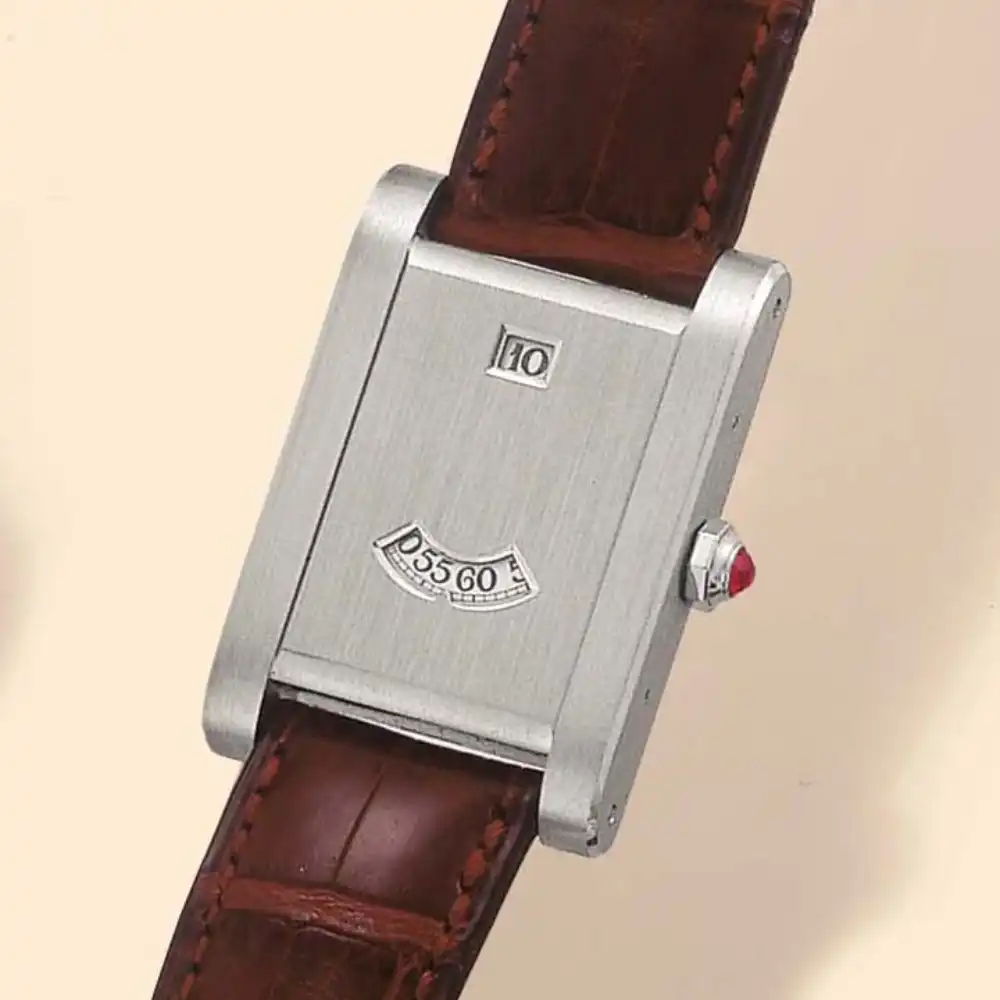
Cartier’s creativity truly seems to have no limits, and the Cartier Tank à Guichets is a perfect example. Introduced in 1928, this extraordinary watch fully embodies the aesthetics of the Art Deco period, dominated by rigorous geometries and bold patterns. Precisely in this innovative context, the Tank à Guichets stands out for its revolutionary design, which abandons the traditional dial with hands to introduce a completely new time display.
Its peculiarity lies in the complication of the jumping hours, a system that uses a rotating disc hidden under the dial. Through two small windows, one at 12 o’clock for the hours and one at 6 o’clock for the minutes, the watch shows the time clearly and innovatively. This mechanism, which rotates every 60 minutes to update the time, represents a perfect fusion of technique and design, breaking completely with the conventions of classical watchmaking.
The original production of the Tank à Guichets was extremely limited, with fewer than 20 made. This rarity made it a coveted piece by collectors around the world, fueling a real race to grab one. In 1996, Cartier decided to revive the model, updating it for modern times. Among the most famous versions is the 1997 version, in platinum and limited to 150 pieces, created to celebrate the house’s 150th anniversary. In 2005, Cartier introduced a new edition in rose gold, included in the prestigious Collection Privée Cartier Paris, once again confirming the timeless appeal of this masterpiece.
Conclusions
With today’s overview I wanted to show you the Cartier watches that, in my view, were most significant from an aesthetic point of view. In all of them we find the same leitmotif, namely: first and foremost, the boundless creativity of Louis Cartier, who more than 100 years ago succeeded in creating timeless objects, capable of never going out of fashion, and secondly, we find the elegance and class that has always distinguished the Parisian brand, capable of daring without losing its values.
Visit our Youtube channel to experience the best of the world of watchmaking firsthand.
For all real-time updates follow us on Instagram.

